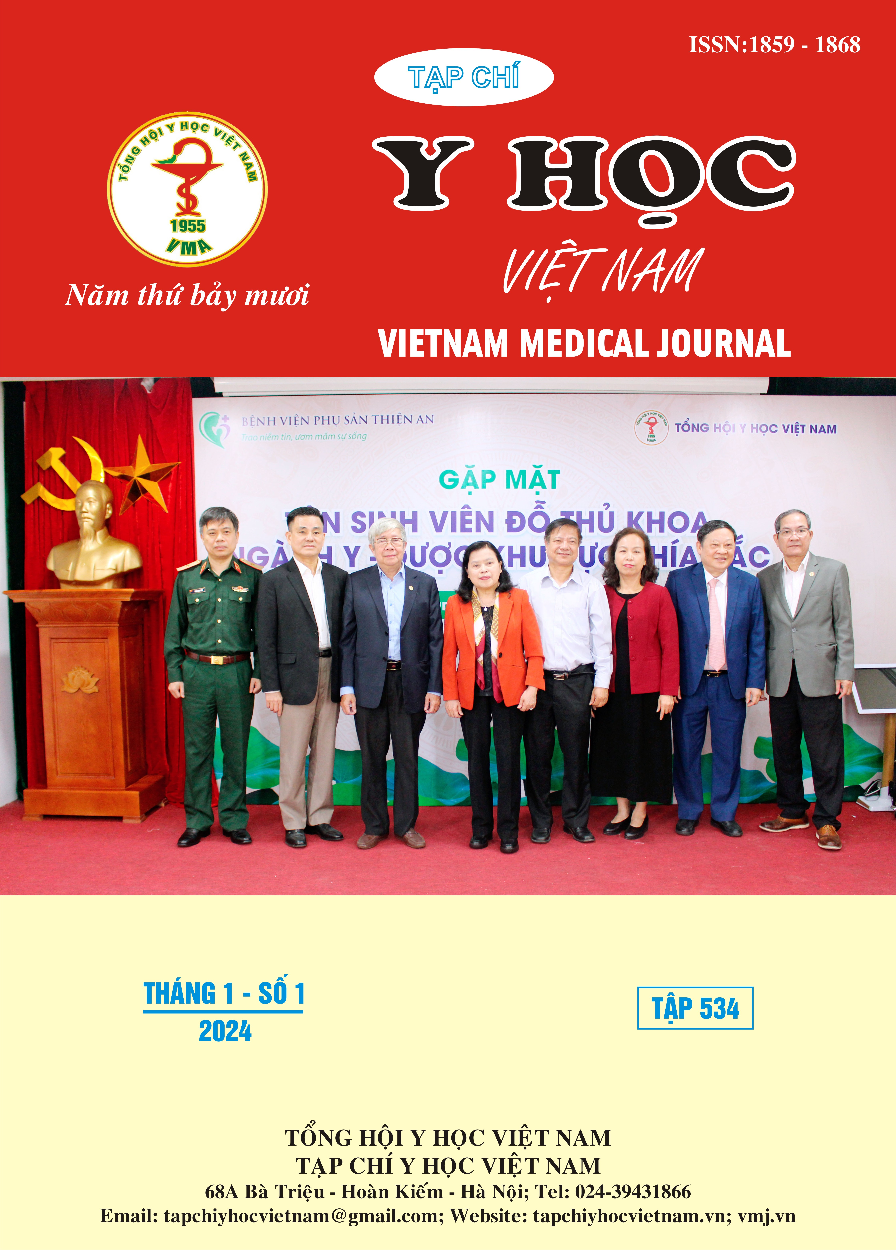CURRENT SITUATION OF GINGIVITIS IN CHILDREN WITH THALASSEMIA AT THE NATIONAL INSTITUTE OF HEMATOLOGY AND BLOOD TRANSFUSION IN 2022-2023
Main Article Content
Abstract
Objective: The study aims to describe the current status of gingivitis in Thalassemia children at the National Institute of Hematology and Blood Transfusion in 2022 - 2023. Subjects and methods: The study was conducted on 130 patients with Thalassemia from May 2022 - October 2023. The research used cross-sectional descriptive study design. Subjects are children aged 6-12 years old who fully meet the inclusion and exclusion criteria. Patients were examined, evaluated, then the level of gingivitis was recorded and the results were filled out. Results: A total of 130 patients participated in the study. The proportion of children with gingivitis is 49 patients (37.7%). Ages 9-12 years old have the gingivitis rate 2 times higher than the gingivitis rate at ages 6-8 years old. Age and gingivitis are statistically significant (p<0.05). The rate of patients with gingivitis and not achieving knowledge is 2 times higher than patients with passing knowledge and having gingivitis (p>0.05). Ages 9-12 years old have the same rate of gingivitis as those aged 6-8 years old (p<0.05). The rate of patients with unsatisfactory behavior is 85.4%, of which patients without gingivitis have unsatisfactory behavior up to 54.1%. The number of patients without gingivitis had higher behavioral scores than the number of patients with gingivitis (p>0.05). Conclusion: Age and knowledge have an impact on gingivitis in thalassemia children aged 6-12 years old. We recommend that there should be a school education program about oral health care for children 6-12 years old to help them have better dental health.
Article Details
References
2. Phạm Thị Thuận. Đánh Giá Thực Trạng Truyền Máu Cho Bệnh Nhân Thalassemia và Một Số Yếu Tố Ảnh Hưởng Đến Giảm Nồng Độ Hemoglobinsau Truyền Máu. Luận văn tốt nghiệp bác sĩ nội trú. Đại học Y Hà Nội; 2008.
3. Nguyễn Công Khanh. Tần số bệnh Hemoglobin ở Việt Nam. Tạp chí y học Việt Nam. Published online 1993:11-16.
4. Hattab FN. Periodontal condition and orofacial changes in patients with Thalassemia major: a clinical and radiographic overview. J Clin Pediatr Dent. 2012;36(3):301-307.
5. Akcalı A, Yıldız MS, Akcalı Z, Huck O, Friedmann A. Periodontal condition of patients with Thalassemia Major: A systematic review and meta-analysis. Archives of Oral Biology. 2019/06/01/ 2019;102:113-121. doi: https://doi. org/10.1016/j.archoralbio.2019.04.004
6. Kolawole K, Oziegbe E, Bamise C. Oral hygiene measures and the periodontal status of school children. International Journal of Dental Hygiene. 2011;9(2):143-148. doi:https://doi.org/ 10.1111/j.1601-5037.2010.00466.x
7. Liu X, Xu J, Li S, Wang X, Liu J, Li X. The prevalence of gingivitis and related risk factors in schoolchildren aged 6–12 years old. BMC Oral Health. 2022/12/21 2022;22(1):623. doi:10.1186/ s12903-022-02670-9
8. Shenoy R, Sequeira P. Effectiveness of a school dental education program in improving oral health knowledge and oral hygiene practices and status of 12- to 13-year-old school children. Original Research. Indian Journal of Dental Research. April 1, 2010 2010;21(2):253-259. doi:10.4103/0970-9290.66652


